Seafood paradise in Hachinohe
This city in Aomori that you’ve never heard of holds the key to a dining experience you won’t forget
ALL it takes is a few days in Hachinohe for us to conclude that sashimi plating must be a local competitive sport. Getting enough fish to practise wouldn’t be a problem. This coastal city in south-eastern Aomori prefecture faces the Pacific Ocean, and brings in so much fresh seafood you can’t visit any self-respecting market or restaurant without being served glistening platters filled with squid rosettes, petals of sea bream, batons of tuna and rows of naked shrimp - all at a fraction of the price you would pay in Tokyo, never mind Singapore.
Tohoku sights
Which is the whole reason we’re here, in what seems to be a random, stick-a-pin-in-the-map-of-Tohoku moment. Never heard of Hachinohe? Neither had we, until a casual chat with a Japanese chef friend in Singapore became a travel epiphany.
“Why don’t you visit Hachinohe? It’s my hometown,” said Yohhei Sasaki, head chef of our favourite Japanese-Italian restaurant La D’Oro in Mandarin Gallery. He had us at: “My uncle has a fish shop there, and the seafood there is really cheap and very fresh.”
It should be noted that when Japanese chefs talk about their hometown, it doesn’t necessarily equate to scenarios filled with stunning natural greenery, beautiful architecture, a proliferation of ancient temples and purveyors of local craft lining up to impress you.
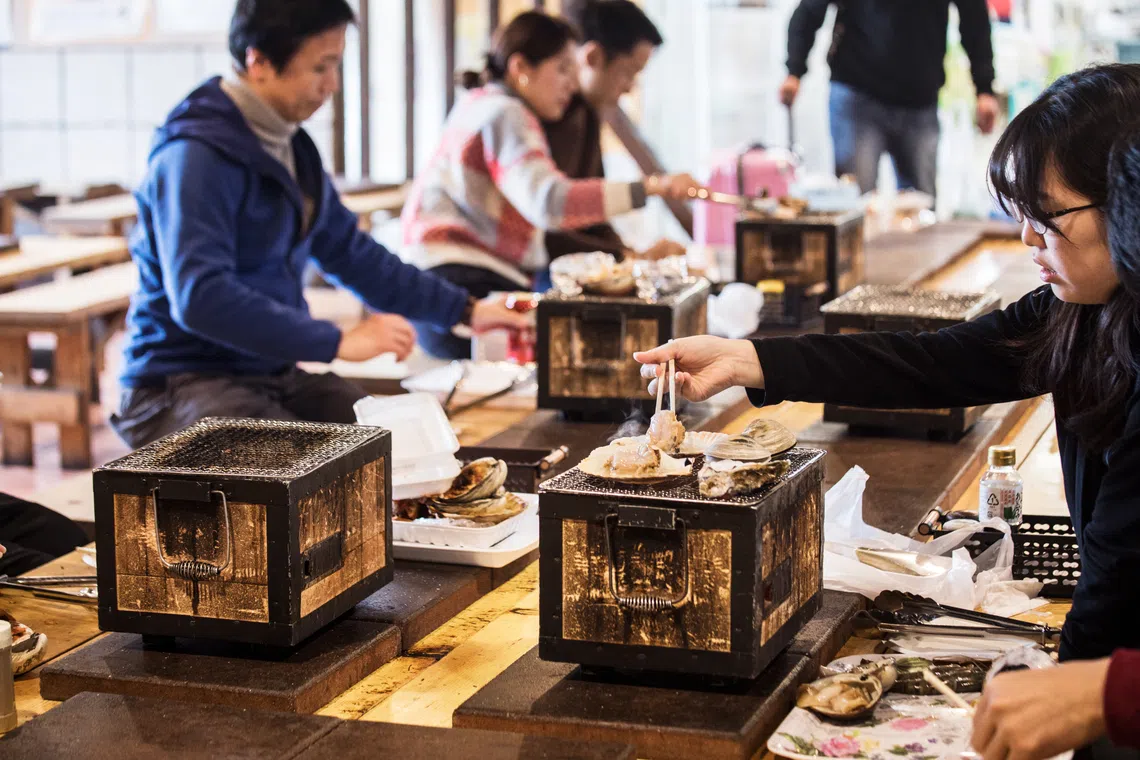
Hachinohe – a two-and-a-half hour shinkansen ride from Tokyo – has its fair share of nature and rich history, but it is by and large a working city with a small-town vibe. But what it lacks in character, it more than compensates for with its proximity to the port, and Japan’s biggest morning fish market.
Rent a car if you can – it’s not expensive at around S$80 a day, and you have the flexibility to explore the city and even the surrounding towns, each with its own unique identity. Nambu, for example, is known as the “Fruit Kingdom of the North” especially during the summer for its fruits, particularly cherries.
Takko is famous for its premium garlic and wagyu, while Gonohe is known for horsemeat, a delicacy in this part of Japan. And Oirase has its gorge, for the hikers and rafters among us. Even if you stick to Hachinohe city, you can get your fix of nature on the Tanesashi Coast, a 12-km stretch of coastline with beaches and hiking trails.
Seafood paradise
But our mission is clear: to find seafood so fresh, the actual quality doesn’t really matter because you just can’t beat eating at the source. Once you get used to it, it’s almost hard to go back to Tokyo, where even the top grade kegani (horsehair crab) at one of the city’s most exclusive restaurants can’t beat what you get at Sushi Mizuho, a one-man operation in Iwaizumicho, Hachinohe city.

Our first deep dive into what the surrounding waters has to offer, Sushi Mizuho rolls out the likes of rockfish sashimi that’s fleshy and sweet, and yes, local kegani. While Hokkaido claims to be the source of the best crab, the Aomori version holds its own. Sushi Mizuho serves it peeled – a small pile of neatly picked flesh, served with its own brown roe and a wedge of lemon.
SEE ALSO
This is also where we get our first taste of raw sea cucumber, caught in nearby Mutsu Bay. Slippery with a tender bite, it’s a complete contradiction to the hard and crisp versions we’re used to. By the same token, Aomori monkfish liver is equally impressive for its smooth and pristine flavour.
Then there’s white uni from Oma, and of course, mackerel, which is synonymous with Hachinohe. The damage for this virtually nonstop flow of largesse at one of the city’s top restaurants? Just under S$250 a head, which we would gladly pay anytime.
Fish market fare
For a small city, Hachinohe has at least three major fish markets that you need to add to your itinerary. Unfortunately, the biggest one – Tatehana Wharf Morning Market – is only open on Sundays, so we totally miss out on that.
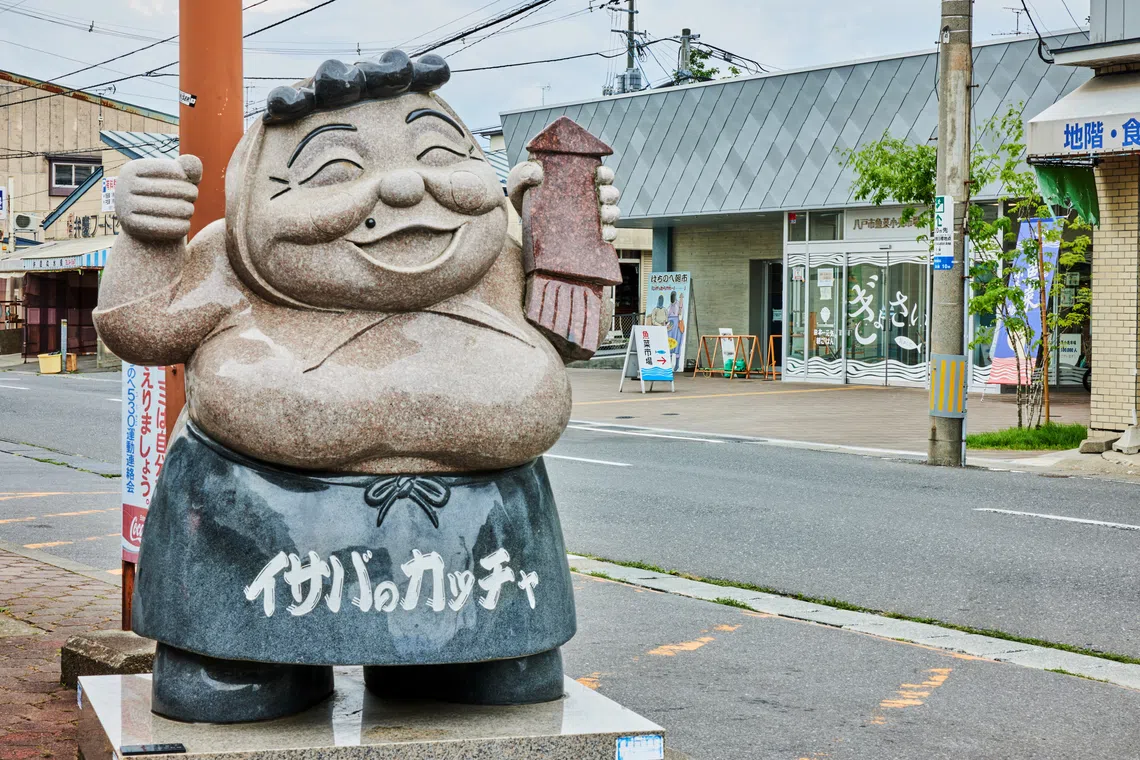
If you can crawl out of bed early enough (or just don’t go to bed at all), you can catch the activity at Mitsuminato Station Morning Market, which has been operating since World War II. It’s iconic for its elderly women stallholders, who typically wore handkerchiefs around their heads and carried baskets on their backs. A statue that immortalises them stands in a corner of the street lined with fish shops – an endearing motherly figure wearing an apron and wielding a squid.

If the shops are closed by the time you get there, grab a bite at Minato Shokudo, a tiny cramped shop that sells fresh kaisendon – basically chirashisushi featuring the day’s catch piled on top of a bowl of rice, drizzled with sauce and garnished with a raw egg yolk. Our bowl has tuna, shrimp, scallop, squid and white fish – a generous portion for 2,000 yen (S$18). There are cheaper versions at just 1,300 yen. We also get a bowl of soup – a local specialty of rich broth stuffed with mushrooms, tofu and “senbei”, a kind of wheat based cracker that softens like dumpling skin that’s slippery and chewy.
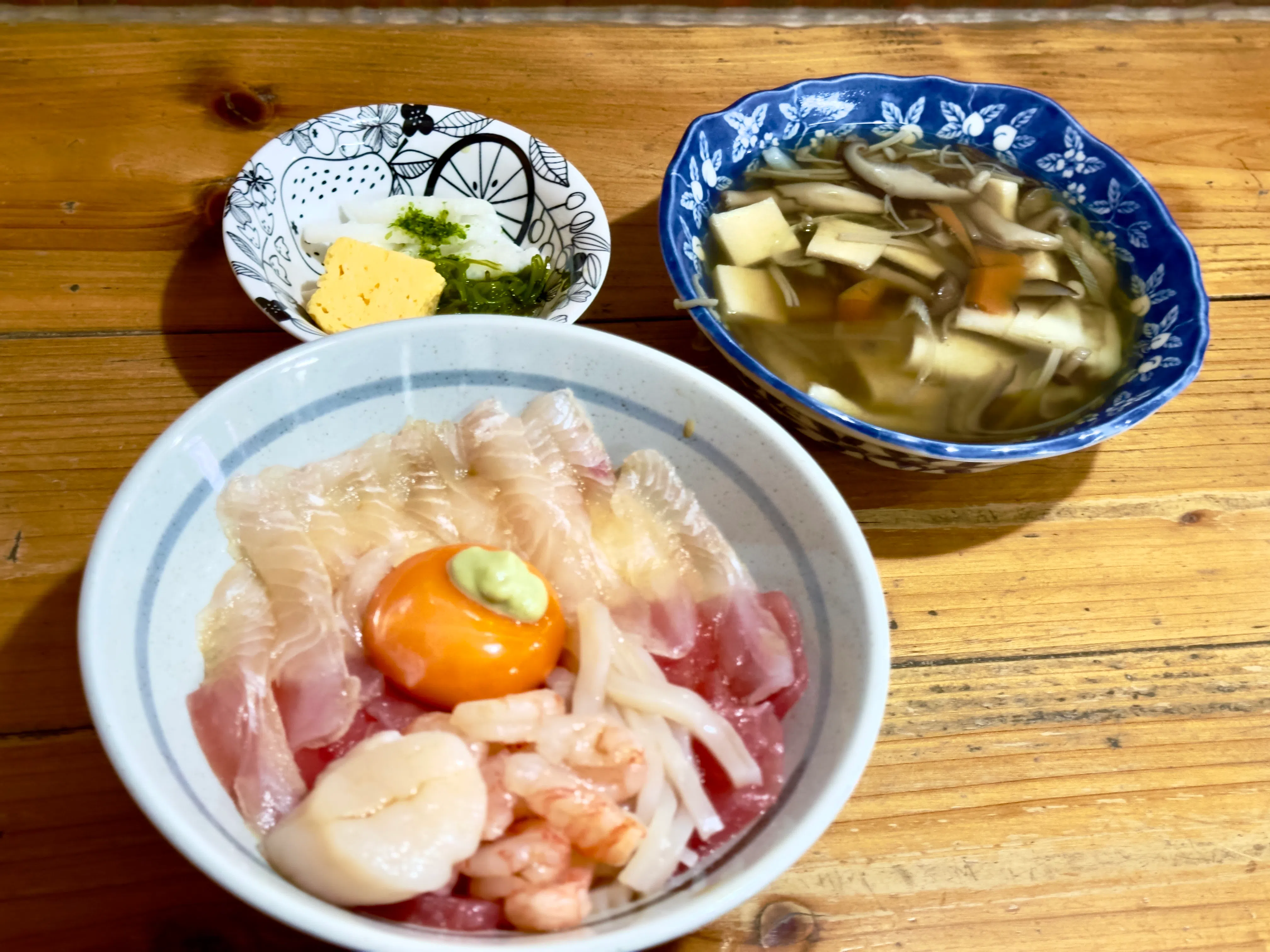
For a theme park experience, head to Hasshoku Centre, a sprawling market with fresh seafood on one side, vegetables and fruit on another, and local souvenirs and snacks in between. It’s colourful and fascinating, and there’s also a large dining area where you can grill freshly purchased seafood or meat (there are stalls selling beef and pork too) on large shichirin (charcoal fired grills). And before you say anything about the thick smoke that wafts through the area like dementors from Hogwarts, there’s a sign in English that says “all tables are affected by smoke”.

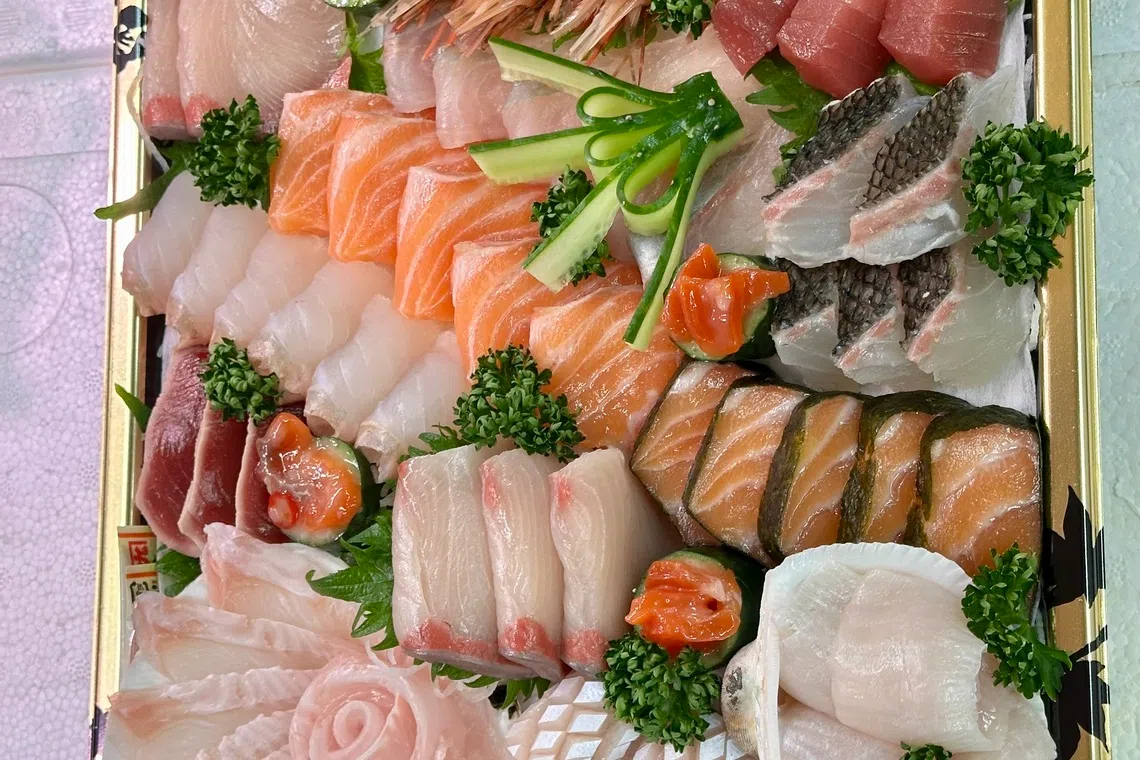
We make a beeline for one of the biggest fish stalls, Marutake Shimamori Shyoten, where La D’Oro chef Sasaki’s uncle, Masayoshi Shimamori, cuts a distinguished figure even in overalls and rubber boots. Sasaki’s mother Ikuko works with her brother, overseeing the incredible variety on offer, from sashimi to oysters to shellfish and more. Watch them turn colourful slices of seafood into still art with intricate platters worthy of a special dinner party at home.
Destination dining
If you’re on your way to Tanesashi Coast, stop by Kofunato Shokudo, which is like Hachinohe’s version of a seafood shack. The rustic wooden structure sticks out over the ocean with a stunning view of rocks and sea, while the old-fashioned dining room serves an extensive menu of seafood both raw and grilled.
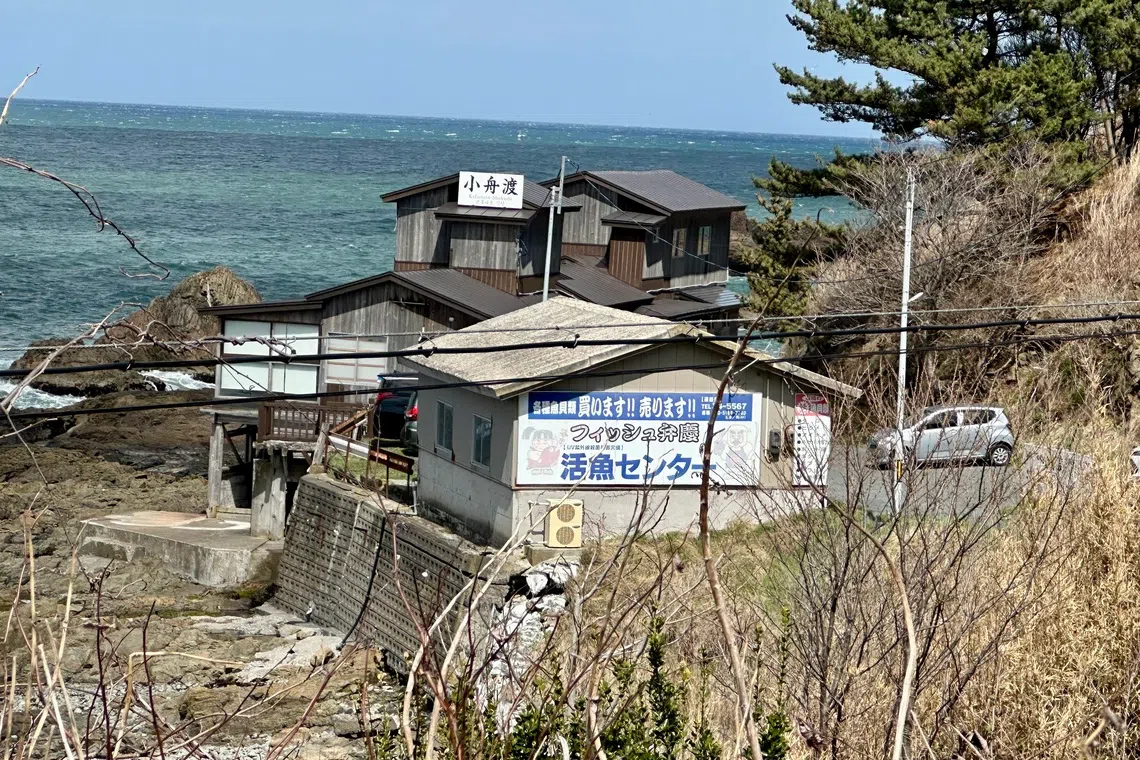
Eat your fill of sashimi artistically arranged, and warm yourself up with shio ramen, a steaming hot bowl of clear hearty broth with chewy noodles, scallops and uni. It’s nothing fancy, just comforting food that’s super fresh.

Back in town, try to snare a table at Banya in Tsuitachimachi, a tiny izakaya whose owner opens and closes as he pleases. It’s old-fashioned fun as you squeeze into tiny tables and order plates of mackerel, giant whelk, plump botan ebi, and even a sampling of stir-fried horse meat that tastes like a cross between beef and pork. Not something we would re-order.
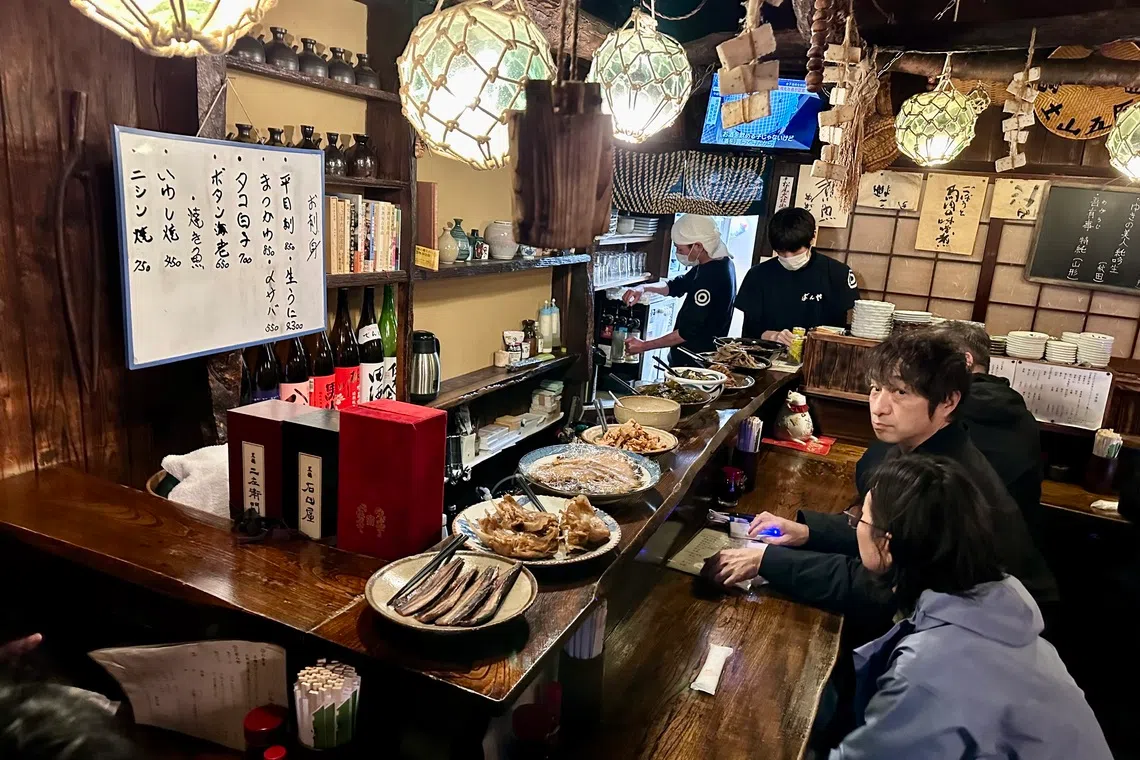
If the night is still young, check out one of Hachinohe’s famed yokocho or drinking alleys, filled with tiny little eating spots that barely fit eight people at a time, serving small bites and lots of alcohol.

But if you tire of sashimi or Japanese food in general, Casa del Cibo is a gem that serves sophisticated Italian food by chef Ryohei Ikemi, using ingredients sourced only from Aomori. There’s local samegarei (sole) carpaccio, pork belly in an onion sauce, pan-seared risotto with kinki and even a tortellini made with turtle meat. A must-visit.
Perhaps the piece de resistance is Senyo, one of the most unique experiences we’ve ever had. This one-table-only restaurant is located in a charmingly retro house in a residential neighbourhood. Chef Yasunori Hara has been cooking for 24 years with the help of his mother, and he serves up an amazing menu, again sourced locally.
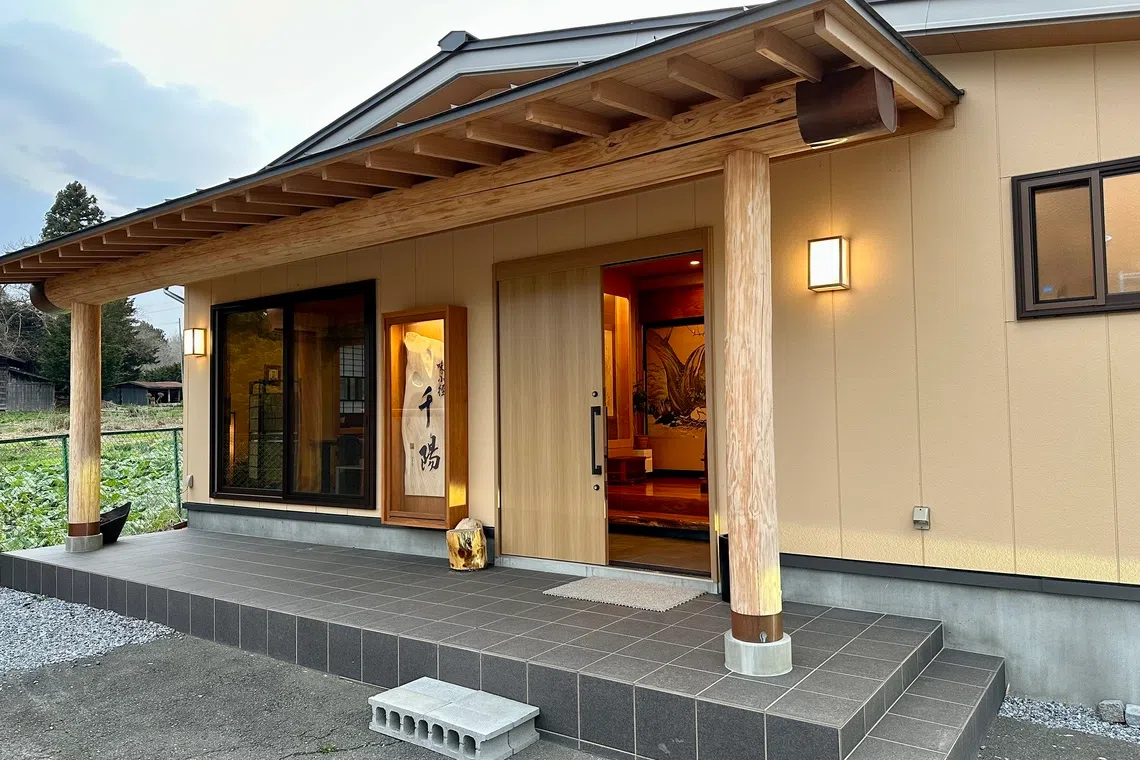
Think freshly caught octopus braised in sake, ika sashimi served in a sauce made of its own liver, sashimi (again in a fancy platter) and sushi of Aomori uni and spring ocean trout. It feels like you’re in a different era.
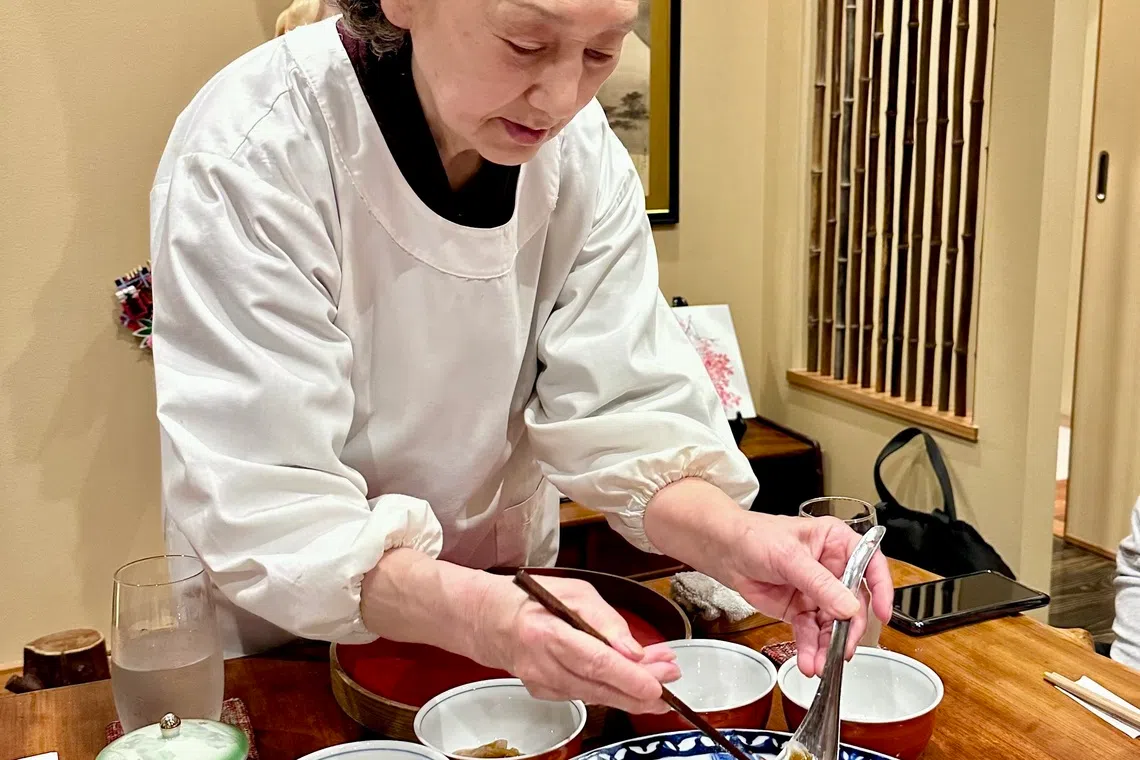
By the time your eating journey is done, your palate is well trained, and your memory primed to remember Hachinohe, with a mental note to return and learn the spelling of other seafood paradises in Aomori.
Decoding Asia newsletter: your guide to navigating Asia in a new global order. Sign up here to get Decoding Asia newsletter. Delivered to your inbox. Free.
Copyright SPH Media. All rights reserved.














